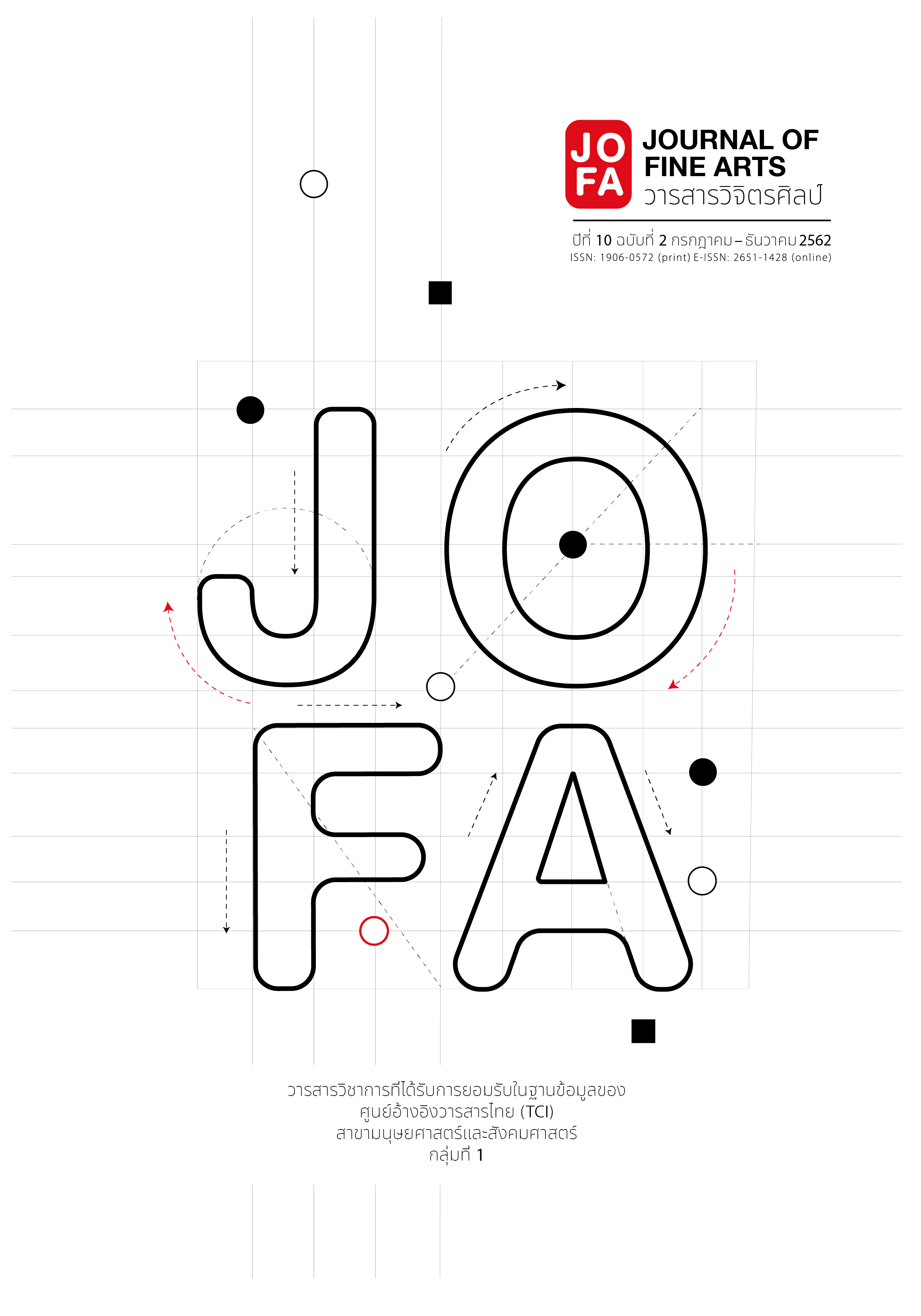The Development of Hand-woven Textiles: The Change of Appearance and Function: A Case Study from Ratchaburi Province.
Main Article Content
Abstract
This practice-based research has as its main objective the development and contemporisation of hand-woven cloth in Ratchaburi province to meet the modern market. The theory of Alex Faickney Osborn is used as a guideline for handwoven textile design and creative textile product design of the Ratchaburi Province.
In the past, the Tai Yuan wove Jok textiles (discontinuous supplementary weft) for household and religious uses. Recently, in contrast, the purpose of weaving Jok textile has shifted from weaving for domestic use to weaving for sale. At present both traditional Jok textiles and contemporary Jok textiles have been found in parallel to serve modern market.
Methodology. Primary data from field research (discussing, observing, photographing and interviewing local weavers, including local entrepreneurs) and secondary data (a survey of related articles and studies) are used. The information is analysed and synthesised in order to obtain prototype products that retain their own identities and contemporaneity. The research found that, problematically, most of the weavers lacked the concept and guidance on how to develop the design. There is a lack of direction in the development of hand-woven patterns that are attractive and different from previous woven products. This has resulted in duplication and subsequent problems in price setting and marketing, leading to an inability to compete on the international market.
The researcher concludes that Alex Faickney Osborn theory can be applied to handwoven textiles by minimising, maximising and rearranging the design. The change of new materials to 100% silk and Antara yarn instead of Synthetic yarn can also bring a new aspect to handwoven textile in Ratchaburi. One major problem in Ratchaburi is that the weavers and textile designers are accustomed to traditional weaving processes and lack an impulse to experiment new things. The lack of ancestral knowledge in natural dye and materials of use, such as silk and cotton yarn, has resulted in a similarity of style across villages. This has led to many problems, including the decrease of market share and a reduction of price.
Article Details
References
ทรงศักดิ์ ปรางค์วัฒนกุล, และ ชีสแมน, แพทริเซีย. ผ้าล้านนา ยวน ลื้อ ลาว. พิมพ์ครั้งที่ 2. เชียงใหม่: โครงการศูนย์ส่งเสริมศิลปวัฒนธรรม มหาวิทยาลัยเชียงใหม่, 2531.
มานพ มานะแซม, “พัฒนาการเครื่องแต่งกายชาวล้านนา (ไทยวน).” วิจิตรศิลป์ 1, ฉ. 1 (2551): 123.
เอกวินิต พรหมรักษา, “ทฤษฎีองค์การและการจัดการเชิงกลยุทธ์ชั้นสูง Brainstorming.” Promracsa, 5 ตุลาคม 2555. สืบค้นเมื่อวันที่ 7 ธันวาคม 2559. https://promrucsadba04. blogspot.com/ 2012/ 10/ brainstorming. html.
อุดม สมพร, ผ้าจกไท-ยวน ราชบุรี. กรุงเทพฯ: โรงพิมพ์ภาพพิมพ์, 2540.
Osborn, Alex F. Applied Imagination: Principles and Procedures of Creative Problem-Solving, 3rd Ed., New York: Charles Scribner's Sons. 2006.


